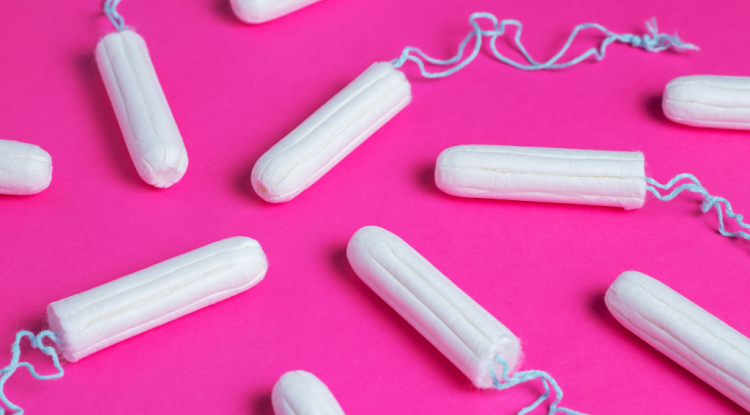What are Tampons and how to use them?
Suhani wanted to swim in her inter-school competition but she was so stressed out about it that her periods started a week earlier! Now what? “Worry not Suhani, you can use tampons”, her mom assured her. But what exactly are tampons and how do we use them? We will discuss this topic in this week’s Curiocity Central.

What are they?
Tampons are disposable menstrual-hygiene products that are inserted inside the vagina to absorb period blood and have a string hanging outside of the vagina (to help pull them out after use).
Many girls/women use tampons to avoid the skin irritation that sanitary pads often cause while also catching the period flow without it flowing outside the body. Tampons can also be used by females if they want to swim during their periods. If inserted correctly, the tampons won’t fall out, so go ahead and swim! Tampons are also helpful for girls who exercise or play sports during their periods.
The 4-6 hour rule
You have to change the tampon every 4-6 hours, at any rate. But, for some girls, and on some days, the tampon might have to be changed sooner in case of heavier flow.
Tampons must not be worn overnight as leaving a tampon in for too long may lead to toxic shock syndrome (TCS), a rare, almost life-threatening situation because of the infection occurring from the used tampon being kept inside the body for a long time. The risk of TCS is said to be higher with the super-absorbent variety of tampons.
Types of tampons
Tampons come in different sizes (slender, regular, super, super plus) which you can use depending on how heavy your menstrual flow is.
Light flow tampons are good for women who’ve just started to use tampons or light menstrual flow while medium flow or regular tampons and the most frequently used ones. Heavy flow: Super and Super Plus are for heavy flow days. You must always avoid scented tampons because they may create irritations that lead to yeast infections.
If it’s your first time using a tampon, it’s a good idea to start with the smallest size. Also, it’s easier to insert a tampon when your menstrual flow is moderate to heavy.
To help you put them in, tampons may come with an applicator. This is a plastic or cardboard tube around the tampon with a thinner tube inside it to push the tampon up into place. Tampons also come without an applicator, and then you just push them up with your finger.
How to insert tampons
Tampons usually come with instructions in the box, which you should read carefully the first time you use them.
Guidelines for inserting a tampon with an applicator
- Wash and dry your hands (you don’t want to introduce unwanted germs to areas that are very sensitive)
- Unwrap the tampon.
- Most tampons have two tubes around them. A thinner inner tube and a thicker outer tube, make up the applicator. The thinner tube is used to push the tampon into the vagina.
- Hold the middle of the tampon – where the inner tube meets the outer tube. Make sure you can see the string dangling out of the inner tube.
- Sit or stand in a comfortable position. Some girls prefer to place one leg up on a toilet seat or bathtub, while other girls prefer to squat.
- With one hand, open your labia, the outer area of your vagina.
- Using the other hand, direct the outside tube of the tampon into the vaginal opening. Aim for the small of your back.
- Gently push the tampon into the vaginal opening until your fingers touch your body.
- Still holding on to the middle of the applicator, use your index finger to push up the bottom half of the applicator – the inner tube with the string dangling out of it. You will feel the tampon pushed through the applicator.
- Once the inner tube is in all the way, and the string is hanging out of your vaginal opening, pull the applicator out.
Don’t worry if it takes more than a few times to get the hang of putting a tampon in. The more you practise, the easier it gets.
Most women who use tampons don’t feel them. If you do, it may mean that your tampon isn’t properly inserted, so you should take it out and try again.
Tips
It’s harder to put in a tampon if you’re nervous or tense. Try to relax when you insert it – though this can be hard if you’re feeling nervous about it. You can also try using a bit of lubricant on the top of the tampon applicator or the tip of the tampon.
How to remove a tampon
- Hold the string hanging out of your vagina
- Gently pull it down
- Wrap the tampon in toilet paper or a tissue and put it in the rubbish bin.
- Put in a new tampon if necessary
It must also be ensured that the string of the tampon does not get wet or soiled while using the toilet. One must hold the string away while using the toilet or remove the tampon altogether if that is not possible.
Tampons – FAQs
- Can I pass urine with a tampon in?
Yes. There are different pathways or openings in the body for urine and menstrual bleeding. The urine comes out from the urethra (urethral opening) and period blood comes out through the vaginal opening.
- Can my hymen (membrane inside the vagina) be causing discomfort?
Yes. Most girls may have a layer of skin called the hymen near or above the vaginal opening. Sometimes this makes using a tampon difficult. To make this easier, you can try to stretch the membrane by inserting your tampon or finger into the vagina and moving it from side to side.
- Will using a tampon break my hymen?
No. Using a tampon does not do this.
- Can I sleep with a tampon on?
Some health workers say that tampons should not be used at night, as it can lead to toxic shock syndrome.
- Sometimes the tampon and its thread accidentally enter the vagina. What then?
Do not panic. Try to sit down and put your finger and thumb in the vaginal opening. Try to feel the thread of the tampon by moving your fingers around a bit. If you can feel the tampon or its thread, try to grab it and pull it out.
If you cannot feel the thread of the tampon, go to a health worker immediately. Due to the risk of toxic shock syndrome, tampons should never be left in the body for more than 8 hours.
Photo: Shutterstock/Skrypnykov Dmytro
Do you have any questions that are bothering you? Share with us in the comments box below. Remember no rude words or personal information in the comment box!


